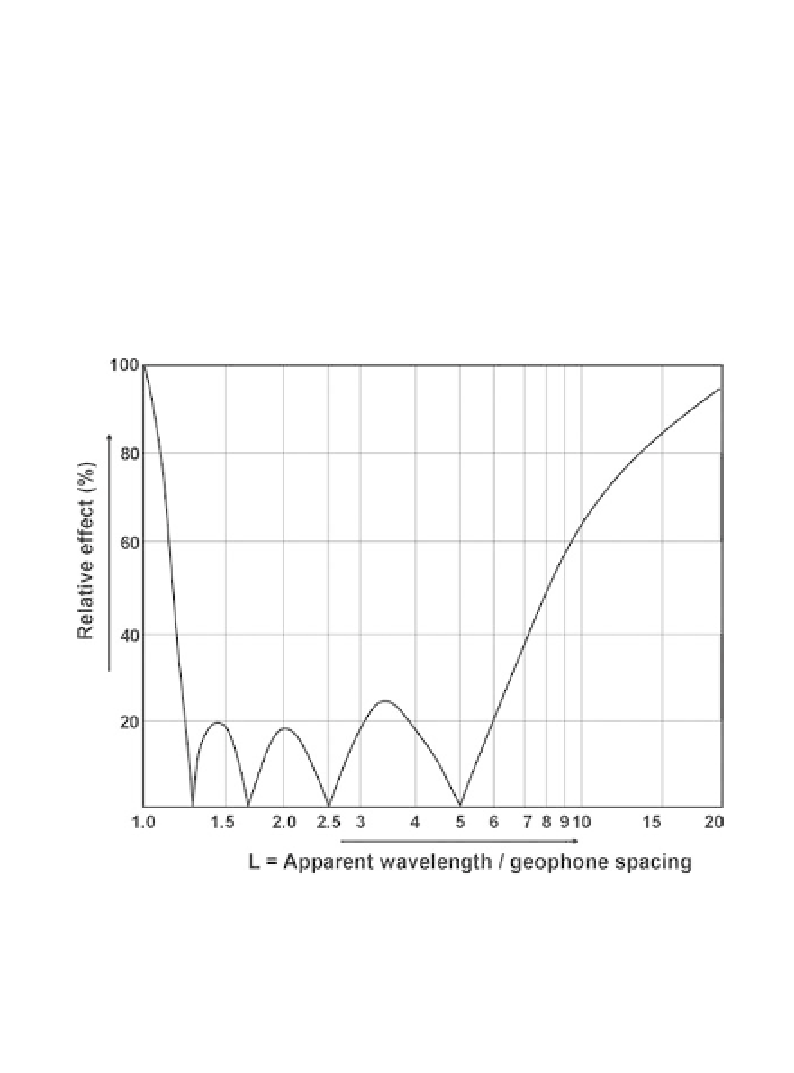Geology Reference
In-Depth Information
almost vertically, will reach all the geophones in an array almost simul-
taneously but the direct wave will arrive at different times and the signals it
produces may interfere destructively.
The efficiency with which a wave is attenuated by an array is defined by its
relative effect
(RE) compared to the effect of the same number of geophones
placed together at the array centre. The variation of the RE with
apparent
wavelength
,
L
(here measured in multiples of the geophone spacing and
which for the direct wave is equal to the true wavelength), for a linear array
of five geophones equally spaced on a line directed towards the shot-point, is
shown in Figure 12.5. An array of geophones equispaced at 2 m can be used
as an example. Strong attenuation occurs for
L
values between about 1.2 and
7, i.e. between actual apparent wavelengths of 2.4 and 14 m. A 500 ms
−
1
Figure 12.5
Relative effect (RE) of an array of five equispaced in-line geo-
phones. The apparent wavelength is equal to the actual wavelength divided
by the sine of the angle between the wavefront and the ground surface. It
is equal to the true wavelength for the direct wave and infinite for a wave
rising vertically. The 100% RE is attained when there is zero spacing be-
tween the geophones, and also when the apparent wavelength is equal to
the interelectrode spacing (
L
=
1).

